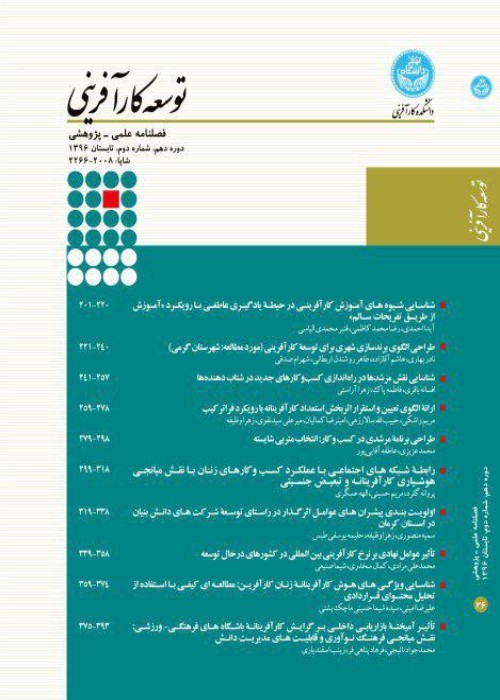Designing a microfinance model for the sustainability of entrepreneurial start-up businesses in Iran (case study: Saderat Bank of Iran)
The study focuses on the significance of entrepreneurial start-up businesses in driving economic growth and employment. It emphasizes that financing plays a crucial role in sustaining these businesses and their development. Challenges such as reduced market share, high costs, intense competition, reliance on traditional financing models, and strong international competitors hinder the progress of start-ups. Insufficient and untimely financing leads to many start-ups being unable to compete effectively. Therefore, the research aims to design a microfinance model to address this issue and ensure the sustainability of entrepreneurial start-up businesses.
The current research is interpretive in terms of approach, in terms of practical purpose, in terms of nature, it is a survey, and a qualitative method to collect and analyze the obtained data, and using the qualitative method of foundation data and semi-structured interview to data collection and analysis were used. 18 interviews were conducted using theory-based sampling method The time domain of this research is between the years 1401-1402. In this research, the open, central and selective three-stage method was used to code the data. SPSS software and average and percentage statistical tests were used to analyze the information of the first part, that is, the part describing the characteristics of experts. In the qualitative part, the method of data analysis is data coding in three stages, using Atlas Ti software.
The study aimed to design a sustainable microfinance model for start-up entrepreneurial businesses. The model consists of six main components: driving factors (development, income generation, growth, and institutional factors), the main category (microfinance in the sustainability of start-up entrepreneurial businesses), strategies (intra-organizational strategies for facility provision and repayment), contextual factors (legal, economic, and social environment), intervening factors (external and internal organizational factors), and consequences (macro and micro-level outcomes).
Therefore, it can be stated that providing microfinance through financial institutions can lead to the growth and development of businesses. The obtained factors in the research model are causal factors in encouraging banks to provide microfinance facilities. In the business development sub-code, the two factors of business sustainability facilities and getting points to start-up businesses are the factors that start-up businesses are encouraged to use micro financing. Microfinance not only brings benefits to start-up businesses, yes, it will always include benefits for the bank that provides the credit. Therefore, more attention should be paid to this sector in policy making and budgeting.
- حق عضویت دریافتی صرف حمایت از نشریات عضو و نگهداری، تکمیل و توسعه مگیران میشود.
- پرداخت حق اشتراک و دانلود مقالات اجازه بازنشر آن در سایر رسانههای چاپی و دیجیتال را به کاربر نمیدهد.



